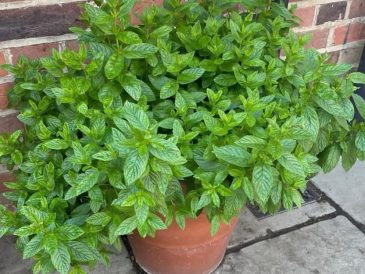Let’s be honest—if you’ve ever stood in the meat aisle, comparing two trays of chicken, one bright white and the other a deep yellow, and wondered what the heck is going on—you’re not alone. I’ve done it. A lot of us have. And if you’re like me, you’ve probably asked yourself, “Does chicken color mean anything? Is one fresher? Healthier? Tastier?” Spoiler alert: the answer’s more interesting than you’d expect.
What Chicken Color Really Tells You
Let’s get the obvious out of the way—yes, chicken color does tell you something. But it’s not about quality in the way you might think. There’s a long-standing misconception that white chicken is somehow “cleaner” or better, and that yellow chicken looks suspicious (or the other way around depending on where you grew up). Truth is, the color difference mostly comes down to diet, breed, and how the chicken was raised.
White chicken typically comes from factory-farmed birds raised indoors on commercial feed, usually consisting of grains like corn, wheat, and soy. These chickens grow rapidly, don’t get much exercise, and aren’t exposed to the outdoors. The meat ends up being pale pink or white, sometimes with a slightly bluish tint (especially if it’s cold). This is the kind of chicken you’ll see in most grocery stores.
Yellow chicken, on the other hand, often comes from birds raised more naturally. The yellow tint can be caused by several factors, but the biggest one is diet—chickens that eat lots of marigold petals, corn, and greens develop more yellow pigmentation in their skin and fat due to carotenoids (specifically xanthophylls). It’s similar to how flamingos turn pink from eating shrimp. So yes, the chicken’s diet literally colors its meat and skin.

Is Yellow Chicken Healthier?
Not necessarily. Or at least not automatically. But let’s unpack this a bit.
Yellow coloring can be a sign that the chicken was raised on a more natural diet with access to a wider variety of nutrients—especially if it was pasture-raised or free-range (we’ll get to that in a sec). That often means fewer antibiotics and better living conditions, which can lead to better flavor and sometimes a healthier fat profile.
However, some producers artificially enhance the yellow color of chicken feed by adding supplements like lutein to give the bird that golden glow, even in a factory setting. That doesn’t mean the meat is better—just more colorful.
So in short: yellow chicken can be a sign of a better lifestyle and diet, but it’s not a guarantee. Always check the label for words like “pasture-raised,” “free-range,” or “organic” if that’s what you’re after.
Does the Color Impact Flavor?
Ah yes, the million-dollar question. Flavor-wise, yes—there can be a difference, but it’s not because of the color itself. It’s because of what the color represents.
White chicken from commercial farms tends to be milder in flavor, leaner, and sometimes even a bit watery when cooked. That’s because those chickens are bred to grow fast, with less muscle development and often more water retention.
Yellow chicken, particularly if it’s free-range or pasture-raised, often has a richer, deeper flavor. That’s because these birds move more, have a more diverse diet, and develop more muscle. The meat might be slightly tougher (in a good way) and more flavorful—kind of like the difference between grain-fed and grass-fed beef.

What About Skin Color?
Let’s talk skin. Chicken skin can also vary wildly in color—from pale and almost translucent to rich yellow or even golden-brown. And again, this comes down to carotenoids in the bird’s diet. Chickens that eat a lot of corn and greens will naturally have yellower skin.
Interestingly, skin color has become a cultural thing too. In some countries (like Colombia, India, or Vietnam), yellow skin is seen as a sign of freshness and better taste. In others (like the U.S.), white skin is often associated with cleanliness and quality. Neither is right or wrong—it’s just regional preference.
So… What Does Free-Range Chicken Really Mean?
You’ve seen it on labels. You’ve heard your foodie friends swear by it. But what does “free-range” even mean?
In the U.S., the USDA says that to be labeled “free-range,” chickens must have access to the outdoors. That’s it. No requirement for how much time they spend outside, how large the outdoor space is, or what that space includes. Sometimes it’s just a little door they may or may not use.
That said, truly free-range or pasture-raised chickens are a different story. These birds roam freely on open pastures, pecking at bugs, grass, seeds, and whatever else they can find. They live more like chickens are meant to live. And yes, this can significantly impact both their nutrition and the quality of the meat.
Pasture-raised chickens often have:
- Higher omega-3 fatty acids
- More vitamin A and E
- Better muscle tone (which means richer flavor)
- Healthier fat ratios
So if you’re trying to get the best bang for your buck in terms of taste and ethics, pasture-raised is often the way to go—even if the meat looks more yellow than you’re used to.
How to Choose the Best Chicken
Here’s a simple checklist for next time you’re standing in front of the meat section scratching your head:
- Ignore color alone. It doesn’t equal freshness or quality by itself.
- Check the label. Look for certifications like USDA Organic, Pasture-Raised, or Certified Humane.
- Smell it. Chicken should smell clean and fresh—not sour or metallic.
- Look at texture. Slimy or mushy chicken is a red flag. Firm is good.
- Buy from trusted sources. Farmers markets, local butchers, or stores that prioritize ethical sourcing are often your best bet.
At the end of the day, chicken color is a clue—but not the full story. Yellow or white, what really matters is how the chicken lived, what it ate, and how it was handled after processing. If you want meat that’s flavorful, nutrient-rich, and responsibly raised, go beyond the color and read the fine print.

And remember, whether your chicken is sunshiny yellow or pale as a ghost, the best indicator of quality is still how it tastes when you cook it up. So get that skillet hot, toss in your herbs, and trust your senses. Chicken color might start the story—but you decide how it ends.




